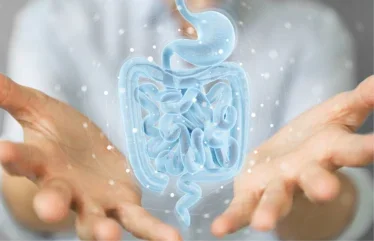
Gastrointestinal infections are highly contagious and widespread, with millions of cases annually causing severe morbidity and mortality, particularly among children, the elderly and immunocompromised patients. Early identification of the causative enteropathogen is key to effective patient care and appropriate therapy, and essential in managing potential outbreaks. Rapid and accurate pathogen identification, however, remains challenging in the routine clinical laboratory.
Breaking the diagnostic burden
Traditional diagnostic methods for gastroenteritis involve stool culture techniques requiring various culture media under different conditions to detect multiple organisms. Bacterial and parasitic pathogens require microscopy, while viruses are typically identified using polymerase chain reaction (PCR) or antigen tests.
These conventional methods can be timeconsuming, labour-intensive, and often lack sensitivity and reproducibility, necessitating highly skilled technical expertise. Multiplex PCR has revolutionised syndromic testing, allowing the simultaneous detection of multiple enteropathogens in a single assay, offering clinicians a more efficient and reliable diagnostic approach.
Next-generation high-throughput gastrointestinal testing
Bruker’s innovative LiquidArray streamlines pathogen testing in a comprehensive syndromic panel for the most prevalent pathogens and toxins responsible for gastrointestinal infections. The advanced FluoroSoftware XT-IVD further enhances efficiency with automated results interpretation and reporting in a familiar, easy to use format. A multiplex PCR syndromic panel, LiquidArray Gastrointestinal offers a two-well format capable of detecting up to 26 pathogens from a single sample. This streamlined workflow covers bacteria, viruses, parasites and pathogen-associated toxins in a single protocol, providing rapid, at-a-glance results that support high-throughput diagnostic needs in routine clinical settings.
Designed for seamless integration, LiquidArray Gastrointestinal is validated for use with the GenoXtract fleXT system, which automates sample extraction and PCR setup. This system minimises manual handling through barcode-based sample sorting, reducing human error and ensuring high precision. PCR analysis is performed on the FluoroCycler XT, Bruker’s highperformance thermal cycler, which enables exceptional thermal precision and optical alignment for enhanced diagnostic accuracy.
A recent observational study assessed the clinical performance of LiquidArray Gastrointestinal VER 1.0, using 1,500 stool samples from patients with suspected gastroenteritis. The results demonstrated very low invalid rates of 0.5%, reduced to 0% upon repeat testing. High diagnostic sensitivity was obtained for most of the targets, while specificity was found to be over 99% across all pathogens. These findings highlight the superior clinical accuracy and reliability of LiquidArray compared to traditional methods, reinforcing its suitability for routine implementation in clinical laboratories.
High-throughput diagnostic excellence
The LiquidArray Gastrointestinal assay brings next-generation multiplexing technology to routine clinical microbiology, delivering unparalleled diagnostic accuracy in a high-throughput environment. By replacing multiple tests with one, single, efficient assay, it enhances patient management, optimises laboratory workflows and strengthens infection control efforts.
With its advanced automation, superior sensitivity and broad pathogen coverage, LiquidArray Gastrointestinal sets a new benchmark in rapid and reliable gastroenteritis diagnostics.





